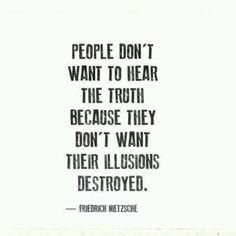 If you read my last blogpost, you will see that the phenomenon of slacktivism does have merit and should not be ignored or simply dismissed as ineffective. Slacktivism, however, is one of the various methods of activism that is common among grassroots culture. Another popular tactic of activism involves the concept of culture jamming. Culture jamming refers to the utilization and appropriation of existing media products, such as billboards, to disrupt or modify the message conveyed. Culture jamming as activism can be done in a variety of ways, such as through ad parodies, sabotage, or pranking.
If you read my last blogpost, you will see that the phenomenon of slacktivism does have merit and should not be ignored or simply dismissed as ineffective. Slacktivism, however, is one of the various methods of activism that is common among grassroots culture. Another popular tactic of activism involves the concept of culture jamming. Culture jamming refers to the utilization and appropriation of existing media products, such as billboards, to disrupt or modify the message conveyed. Culture jamming as activism can be done in a variety of ways, such as through ad parodies, sabotage, or pranking.
In her essay, Pranking Rhetoric: Culture Jamming as Media Activism, Harold discusses these forms of culture jamming, but draws particular attention to the concept of pranking. She claims that pranking is the most effective because it temporarily disables marketer’s portrayal of authority and influence, rather than simply offering an alternative interpretation of existing media messages. Although I do agree with Harold on the potential influence pranks can have, but I disagree on the extent to which she says they are effective. I think in order to recognize the true motivations and intentions behind pranks, a critical perspective is required in the approach.
In this day and age, a critical perspective is not exactly a common approach of people viewing mass media messages (I am not saying it does not happen, I am saying it is not the norm). I am a communication studies student and although I do tend to perceive mass media messages from a critical approach, there remain many instances where I am more passive than active in my interpretations. For instance, if I were to see the Cat House for Dogs advertisement that was illustrated in Harold’s article, I cannot say with certainty that I would understand the intentions behind it rather than just simply reacting with shock and disgust. There are so many appalling things in our world that it is virtually impossible not to forget the existence of the “ugly” side. So, with pranks like the Cat House for Dogs advertisement, how are we to know that it is just that – a prank? Indeed, pranks vary in their shock value and the intentions behind one prank may be far more obvious than that of another. But if the intentions behind pranks are to disrupt the role of consumerist rhetoric to represent anything at all, as Harold claims, then should they not, at the very least, be comprehensible by the audience it targets?



 The society in which we live today is vastly different from the society that existed only a few decades ago. The development of the Internet and the rise of
The society in which we live today is vastly different from the society that existed only a few decades ago. The development of the Internet and the rise of  Of the 7.4 billion people living in the world today (
Of the 7.4 billion people living in the world today (